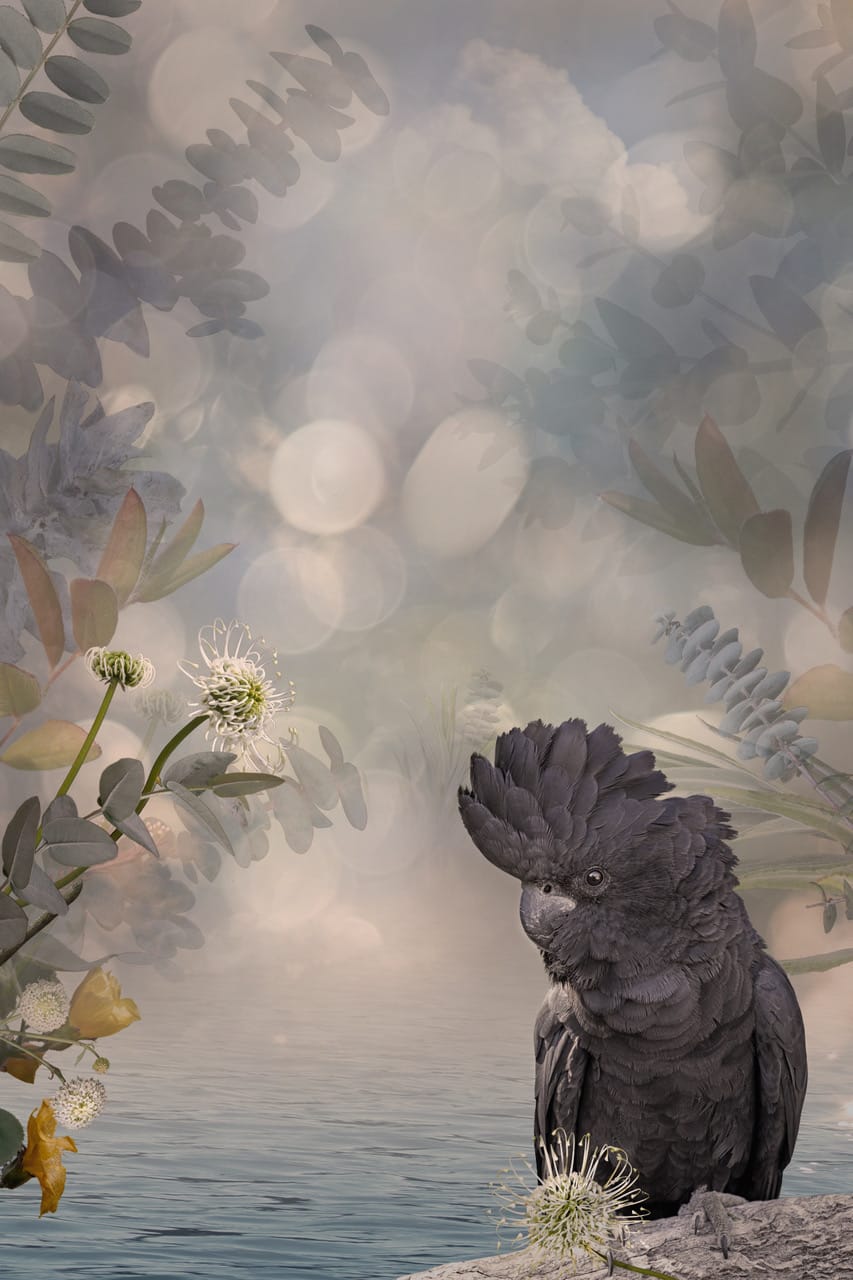
The rediscovery of an 'extinct' Australian plant led to Pamela Pauline's obsession with Australia's threatened species and her extraordinary art.
Words Megan Holbeck
Photography Pamela Pauline, Joe Wigdahl
AN early morning drive to the Blue Mountains Botanic Garden felt like a trip to another world. The winding road was lined with burnt gum trees, trunks shaggy with new growth: seen through fog and drizzle, punctuated by shafting light, it felt like swimming, not driving. I ran aground on the hill of the garden, where artist Pamela Pauline was waiting, blonde bob shining, camera slung around her neck.
We followed paths into the grounds as the sun won through, burning off the mist. Pamela crouched and photographed plants, exclaiming over the curls in ferns, the colours and light—her American roots evident in her accent, enthusiasm and her large smile displaying impeccable teeth. This grin wasn’t just on the surface, either —she’s immediately, genuinely warm—and we quickly slipped into the ‘why don’t I pop your keys and phone in my bag so your hands are free?’ shortcut to female friendship.
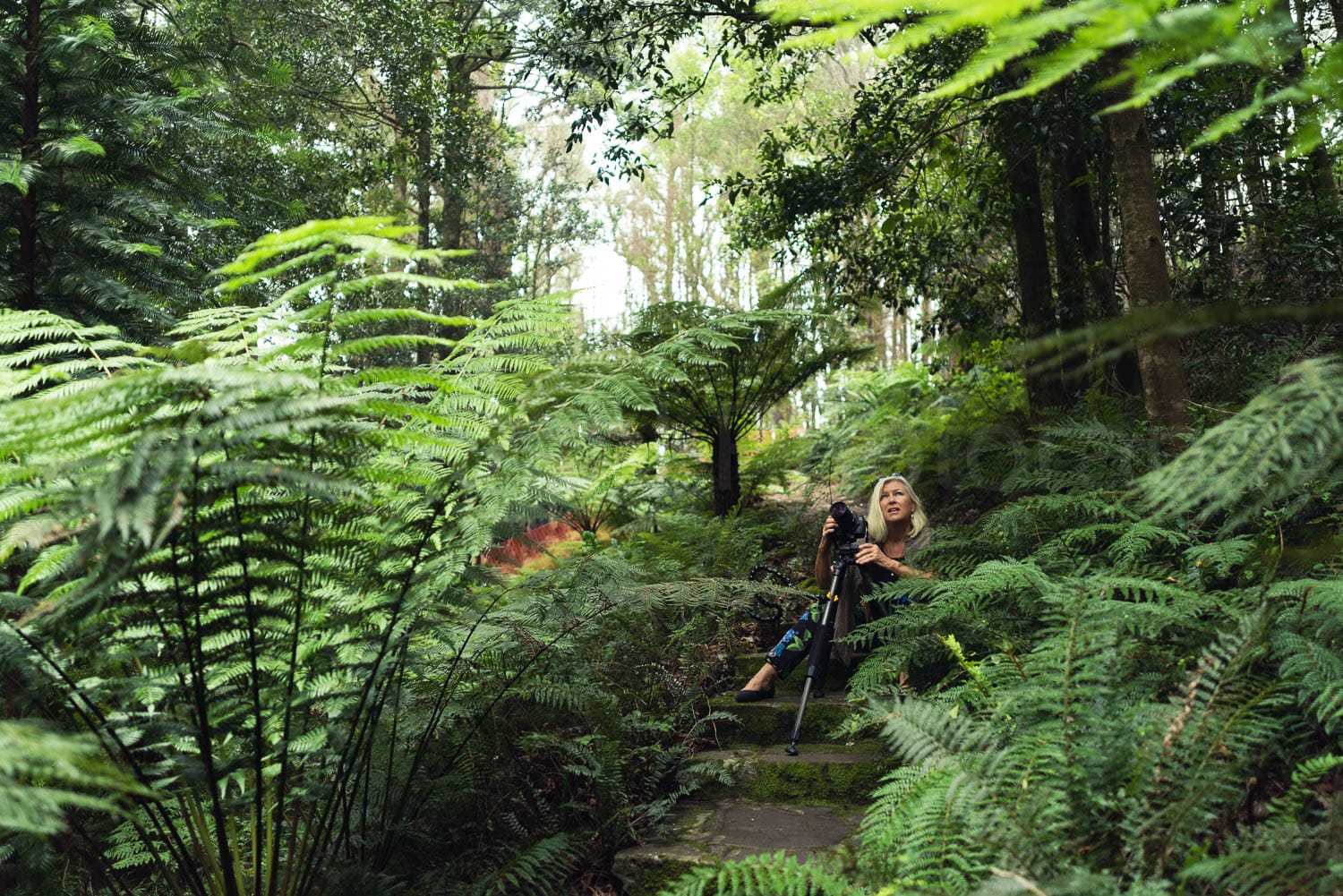
Since 2019, Pamela has been creating composite artworks made entirely of her own photos of threatened Australian flora and fauna. She describes them as ‘beautiful pieces of work that aren’t necessarily literal, but they are actually real. It is a form of bizarre documentary photography.’ She’s made two different series: the 10 works of ‘Fragile Beauty, Rich and Rare’ pay homage to seventeenth century still lifes, while incorporating flora and fauna from each State and Territory, while ‘On the Brink’ comprises eight lush landscapes. To create these works, Pamela has spent almost two years photographing living collections throughout Australia, becoming well acquainted with the country’s botanic gardens. As she guides us through this one, towards the Wollemi pines, she points out where flames nibbled the edge of the grounds.
The conversation follows the fires and the trees deep into the garden’s translocated Wollemi wilderness. One of the world’s oldest and rarest plants, they were thought to be extinct until a remote grove was discovered by bushwalking botanists in 1994. I venture that these trees are the whales of the botanical world: an iconic species with a great media-friendly story—trees as old as the dinosaurs, their location still secret—designed to pique interest in threatened native plants.
Later, over coffee, we come back to the awareness-raising potential of iconic species, leading to mention of David Attenborough’s A Life on Our Planet, a documentary and book which Pamela believes everyone should read. We agree that much of its strength lies in capturing the beauty and diversity of life on Earth, then making it personal—all this amazingness destroyed in one lifetime—before ending with hope.
Pamela’s work has a similar purpose: to showcase the beauty around us, its interdependence and vulnerability, and the biodiversity crisis affecting the world. Her artworks are lush compositions of hundreds of photographs of Australia’s threatened species, that look gorgeous, precious, magical. As Pamela says, ‘I want people to see these artworks as things of beauty, and then feel inspired into action when they learn that all of the flora and fauna featured are threatened species. I want them to ask, “What can I do to make a difference?”’
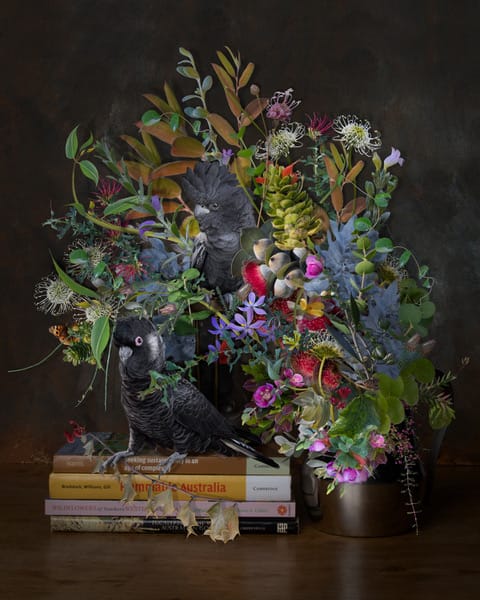
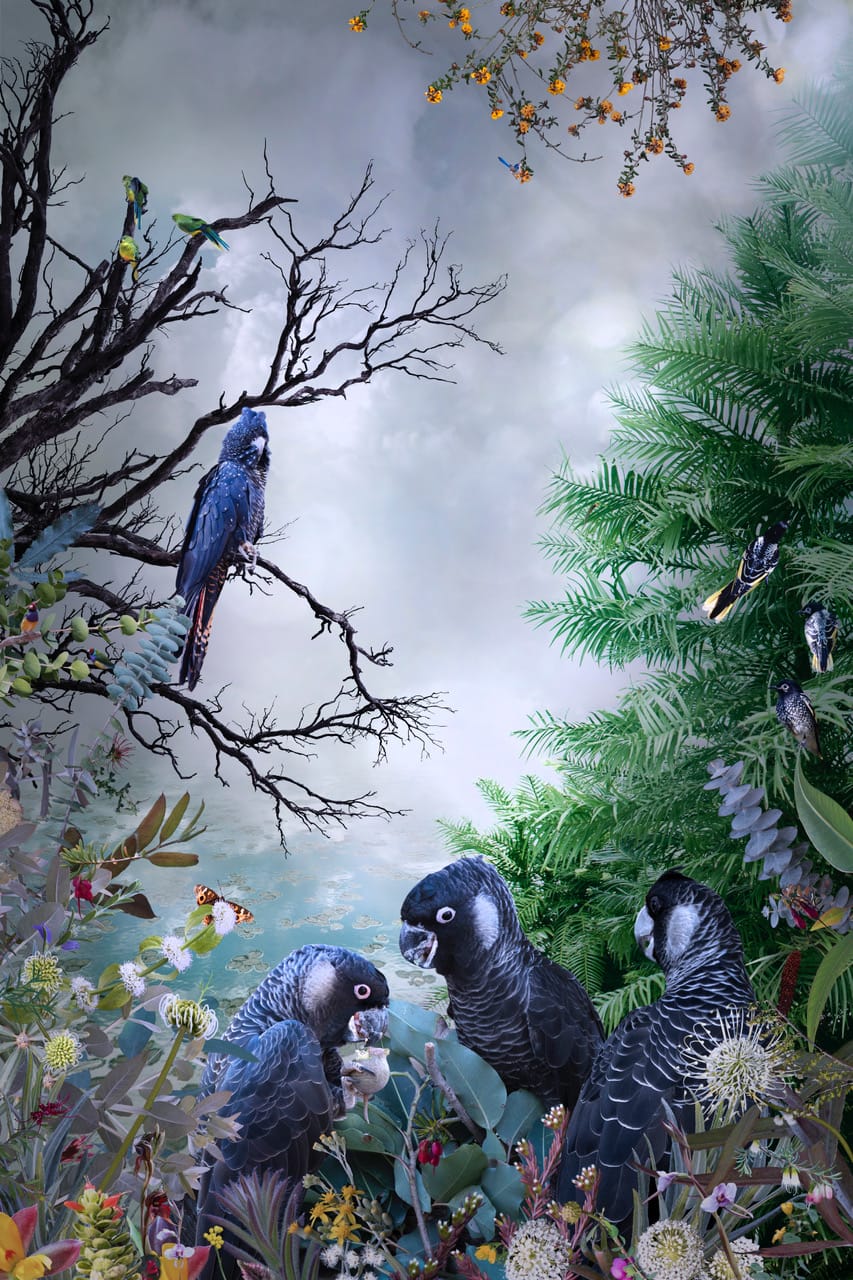
Pamela has been documenting life through a lens for as long as she can remember. She set up her photography business in 2003, shooting everything from portraits to landscapes to fine art. She’s won numerous national and international awards, is an Accredited Photographer of the Australian Institute of Professional Photography. As she moves through the garden, she makes her craft look easy.
Her recent works are intricate, involved, complicated and beautiful. Each is made entirely from photos, the layers made up of real images rather than paint, applied digitally to make rich, vibrant scenes, as false as they are genuine. Pamela’s blurb describes them as ‘unconventional, allegorical artworks that sit somewhere within conceptual, staged and documentary photography’. Creating them requires more than just traditional photography skills: also needed are vision and intuition, technical computing skills, research ability, an artistic eye and the patience to pull it all together.
Pamela has made a time-lapse film showing the creation of her ‘On the Brink’ series, reducing the 50-hour process to 30 seconds. The sky and water appear first, forming an atmospheric, misty background, rich in lights and reflections, before the plants arrive: a branch here, delicate leaves there. Then birds materialise, endangered cockatoos disappearing and reappearing, along with flowers spiky and fuzzy, more leaves and plants, colourful birds and frogs. The finished piece is made up of 56 photographs and 113 layers, containing 11 birds, 35 plants and two frogs. Creating these artworks is meditative for Pamela—which is lucky, given the time it takes—and follows weeks researching, finding, photographing and curating the subjects.
In the way of creative people, all of Pamela’s life—her work, travel, passion and curiosity—has fed into her art. A childhood spent exploring the wilds of Wyoming with her family instilled a love of nature and appreciation of the world. Since leaving America in 1988, she has an impressive travel CV, spending time in France, the Netherlands, South Africa, Japan, Indonesia, India and Australia. Travel opened her eyes, but the research skills so crucial for this work came from her Master of Business Administration degree and 10 years working as a market research consultant, while her technical skills began with a computer science degree and digital photography. She’s always been creative— singing, music, photography—but now that her three children are adults, the caring load has lifted. ‘I feel like I’m really coming into my creativity. I’m passionate about it because I feel like it has taken this long.’
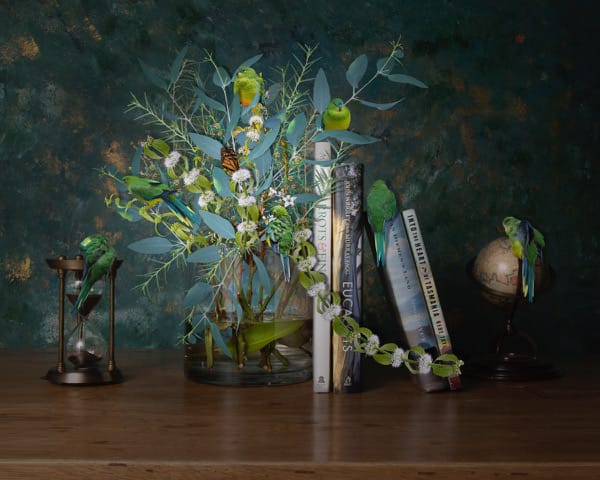
Pamela’s strong focus on Australian natives began with a flock of parrots. Her father died in 2018, the news received from her mum in the States. She went for a bushwalk to process and was surrounded by lorikeets. After assuring me she wasn’t a crazy bird lady, she said, ‘My whole body just knew that that was my dad saying, “I’m okay. We’re all connected.”’ This gave her a new appreciation of the freedom and support she had received from her parents, and she decided to focus on where she was, to ‘Grow Where You Are Planted’ as the resulting series was called.
Not long afterwards Pamela read about the Hibbertia fumana, a small, ordinary-looking plant believed extinct until discovered on a development site in Sydney’s south west. It caught her interest, and she began researching Australia’s vulnerable flora. ‘I became so aware of what we risk losing here. The biodiversity crisis is enormous in Australia. I thought, I really want to document all of this in a way that’s not just a boring photograph of an ugly plant.’
She’s travelled extensively to ensure her work is neither boring nor ugly, beginning in 2019 with weekly visits to the Australian PlantBank at Mount Annan, Australia’s largest native plant conservation seedbank. She’s since visited conservation gardens, zoos and rehabilitation centres around Australia to take photographs of their living collections.
Pamela’s upcoming exhibition in Sydney’s Royal Botanic Garden shows how her art has grown (editors note; this exhibtion was held in 2021). It began with tiny specimens like those in the garden outside—hanging on despite their vulnerability, easily overlooked—blooming into striking pieces full of wonder and beauty. Each living thing shown is important both for itself and for what it represents: the amazing biodiversity of the world, the interconnection of all things and the importance of doing what we can to save them.
Visit Pamela’s website at pamelapauline.com or Instagram @pamelapaulinephotography.